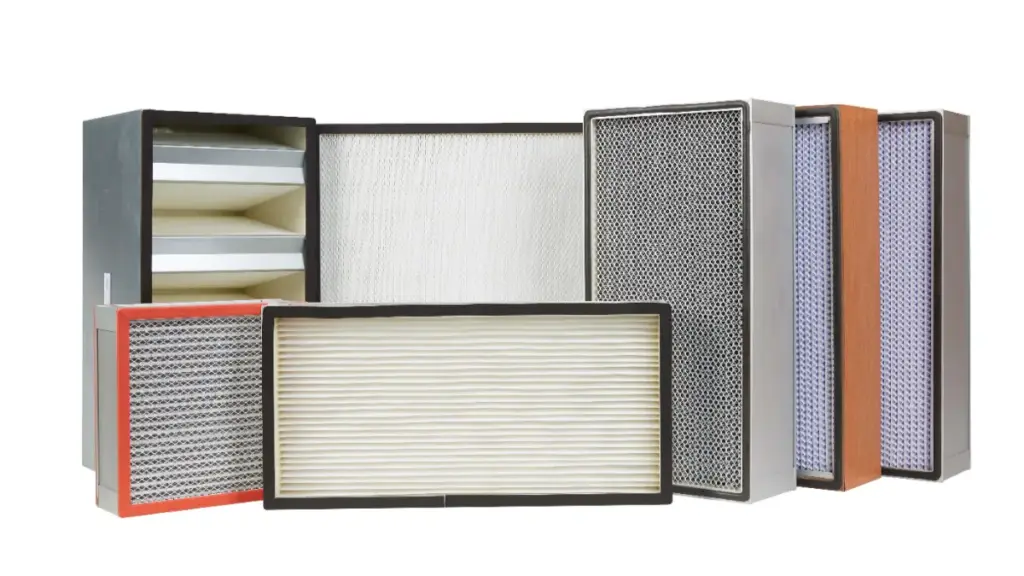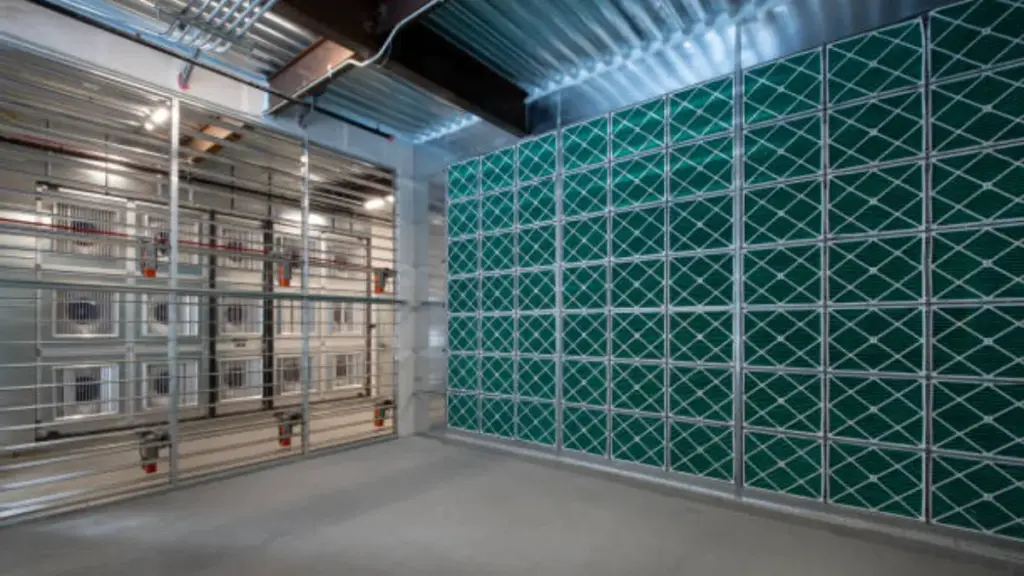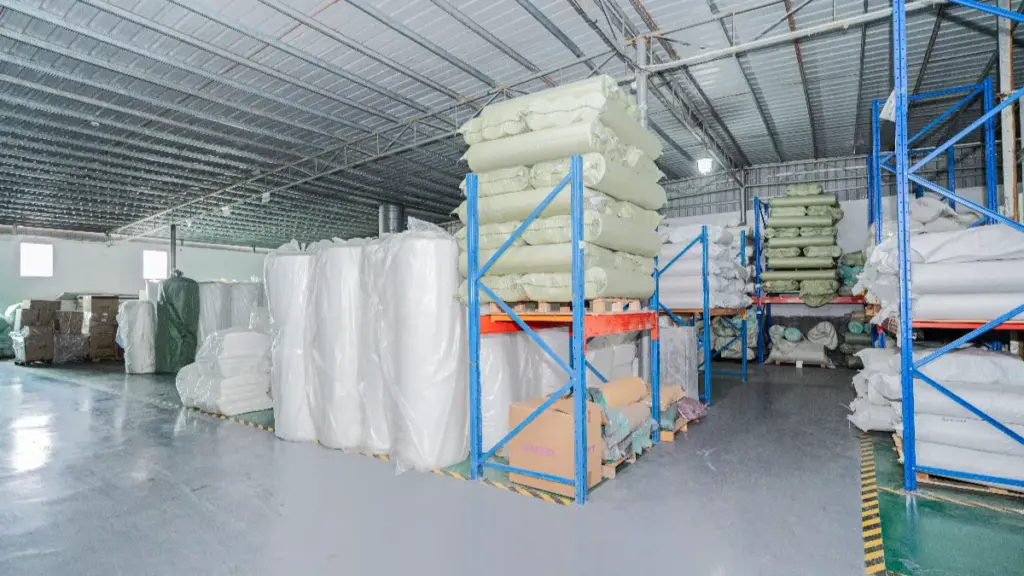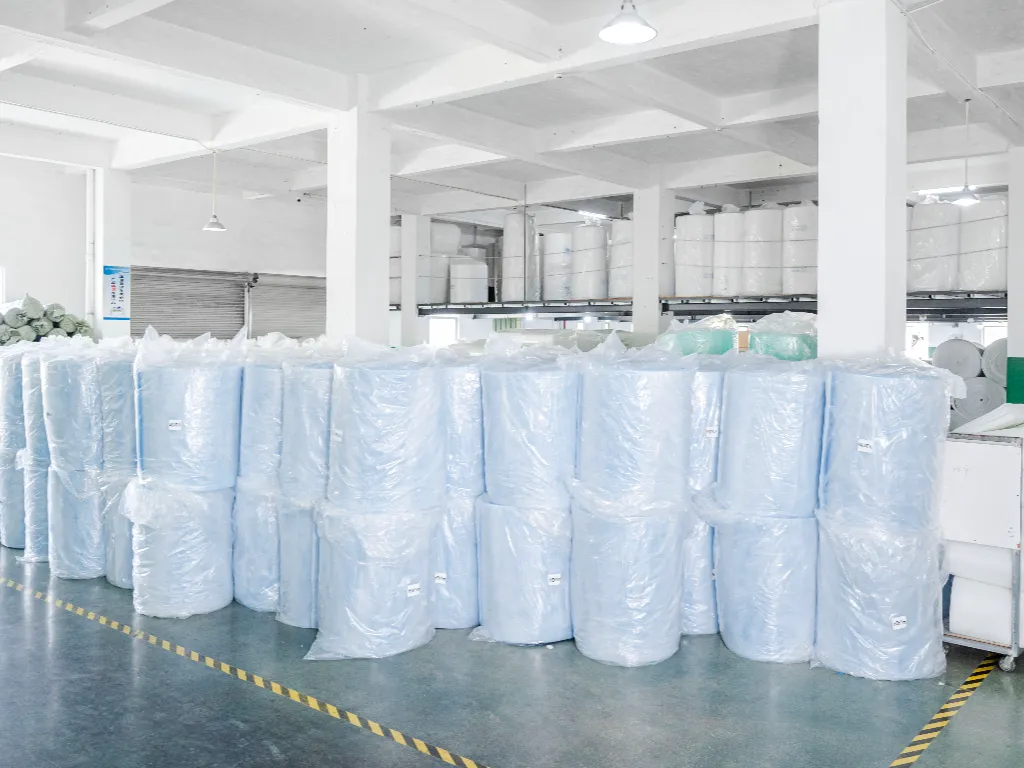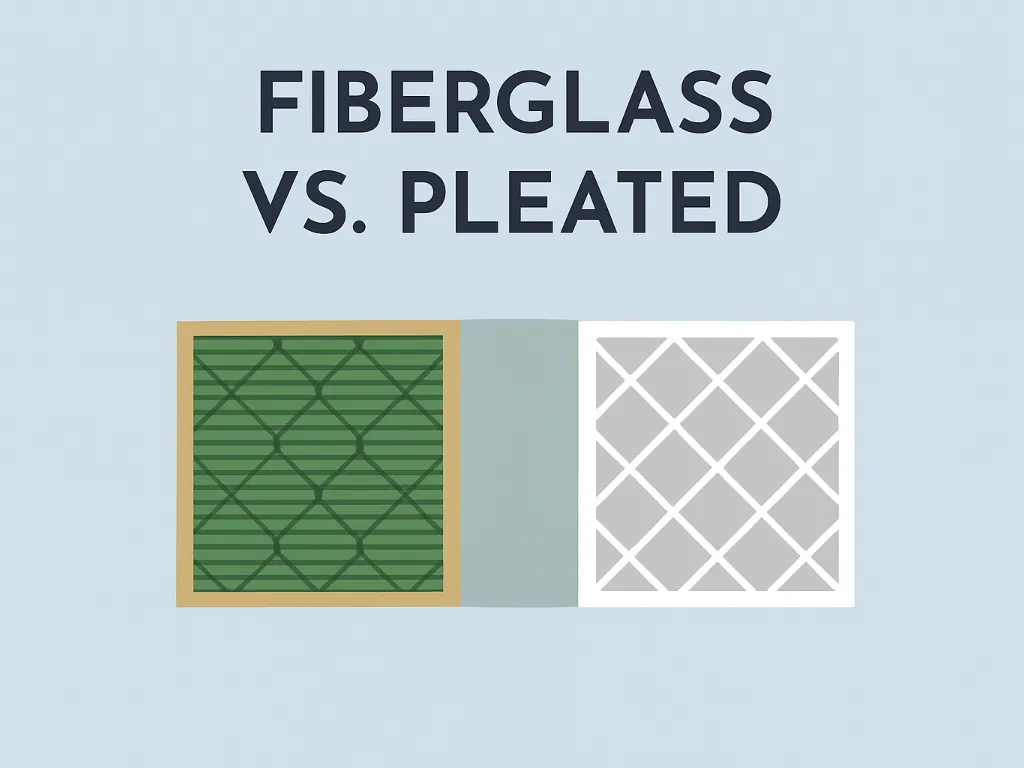Air filter roll materials play a crucial role in air filtration systems, determining efficiency, การไหลของอากาศ, and durability. Choosing the right material ensures effective particle removal, longer filter life, and optimal performance across various applications. This article provides a detailed guide to different types of air filter roll materials, their performance characteristics, and practical applications, helping you make informed decisions for procurement or system design.
Air Filter Roll Material Performance Comparison Table
| Material Type | ประสิทธิภาพการกรอง | ความต้านทานการไหลของอากาศ | Durability | การใช้งานทั่วไป |
| Polyester (PET) | Medium | Low | สูง | เครื่องปรับอากาศ, ทางอุตสาหกรรม, ยานยนต์ |
| Polypropylene (PP) | Medium | Low | Moderate | Air purifiers, ทางอุตสาหกรรม |
| Nylon (PA) | สูง | Medium | สูง | Precision filtration |
| ไฟเบอร์กลาส | Medium-High | Medium | สูง | Industrial, บูธทาสี |
| Activated Carbon | Low-Medium | Medium | Moderate | Odor removal, ควันสารเคมี |
| Melt-Blown PP | สูง | Medium-High | Moderate | HEPA pre-filters |
| Micro-glass Fiber | Very High | Medium-High | สูง | แผ่นกรอง HEPA, ห้องสะอาด |
| Nano-fiber (PTFE) | Extremely High | Medium | สูง | Ultra-fine filtration, lab applications |
| Antibacterial | Medium | Low-Medium | Moderate | โรงพยาบาล, residential |
| Flame Retardant | Medium | Low-Medium | สูง | Factories, high-risk environments |
| Composite (Activated Carbon + แผ่นกรองเฮปา) | Very High | Medium-High | Moderate | Odor and particle combined filtration |
Synthetic Fiber Air Filter Roll Material
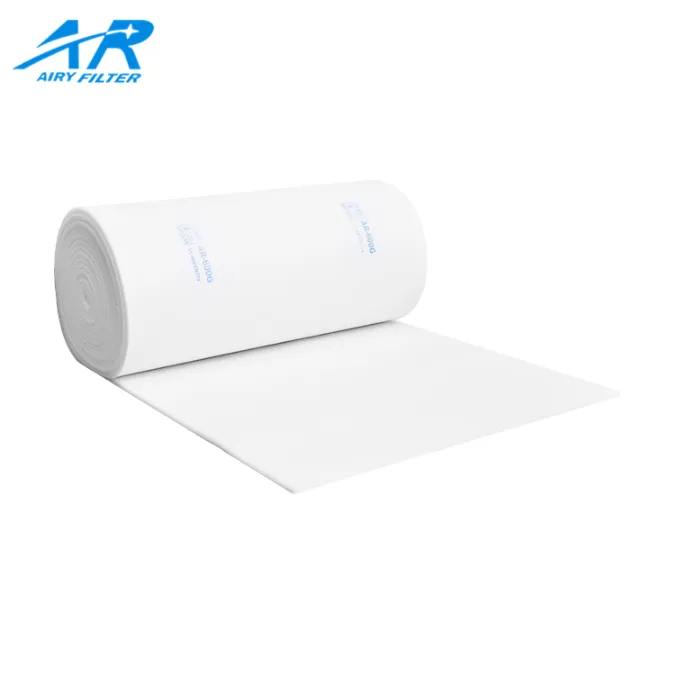
Synthetic fiber rolls are widely used due to their durability, chemical resistance, และความคุ้มค่า. They provide stable filtration in both residential and industrial applications while maintaining good airflow. Common types include polyester, polypropylene, and nylon.
Polyester (PET) Filter Roll
Polyester (PET) filter rolls are made of fine synthetic fibers designed to capture dust and particles effectively. They provide medium filtration efficiency and high durability, resisting deformation under temperature changes and humidity. PET rolls are hydrophobic, which helps maintain performance in environments with variable moisture. They are commonly used in HVAC systems, industrial air handling units, and automotive filtration.
| ข้อดี | ข้อเสีย |
| High durability and dimensional stability | Medium filtration efficiency for very fine particles |
| Resistant to moisture and chemicals | Limited odor adsorption |
| Long service life in industrial applications | Can be more expensive than PP |
Polypropylene (PP) Filter Roll
Polypropylene (PP) filter rolls are made of fine, non-woven fibers with a density typically between 0.90–0.95 g/cm³. This low density allows air to pass through easily, maintaining good airflow while capturing medium-sized dust particles. The fibers resist most chemicals and moisture, making them suitable for industrial air purifiers, ระบบปรับอากาศ, and other large-scale filtration applications. Compared to PET, PP rolls are slightly less durable under long-term high-temperature conditions.
| ข้อดี | ข้อเสีย |
| Chemical and moisture resistant | Slightly lower durability than PET |
| Low density for efficient airflow | Medium filtration efficiency for very fine particles |
| Cost-effective for large-scale filtration | Limited odor adsorption |
Nylon (PA) Filter Roll
Nylon (PA) filter rolls achieve high filtration efficiency because their fibers have a smaller diameter (typically 10–20 microns) and a high surface area, allowing them to trap particles down to 1 micron effectively. The material’s molecular structure gives it excellent tensile strength, so the roll resists tearing or stretching even under continuous airflow. Nylon fibers can absorb some moisture, which may slightly affect filtration performance in humid environments, but they are ideal for precision filtration applications in laboratories, ห้องสะอาด, and other controlled environments.
| ข้อดี | ข้อเสีย |
| Fine fiber structure captures very small particles | Absorbs moisture, which can affect performance |
| High tensile strength resists tearing | Slightly higher cost than PP or PET |
| Suitable for precision filtration | Requires controlled environment |
Fiberglass Air Filter Roll Material
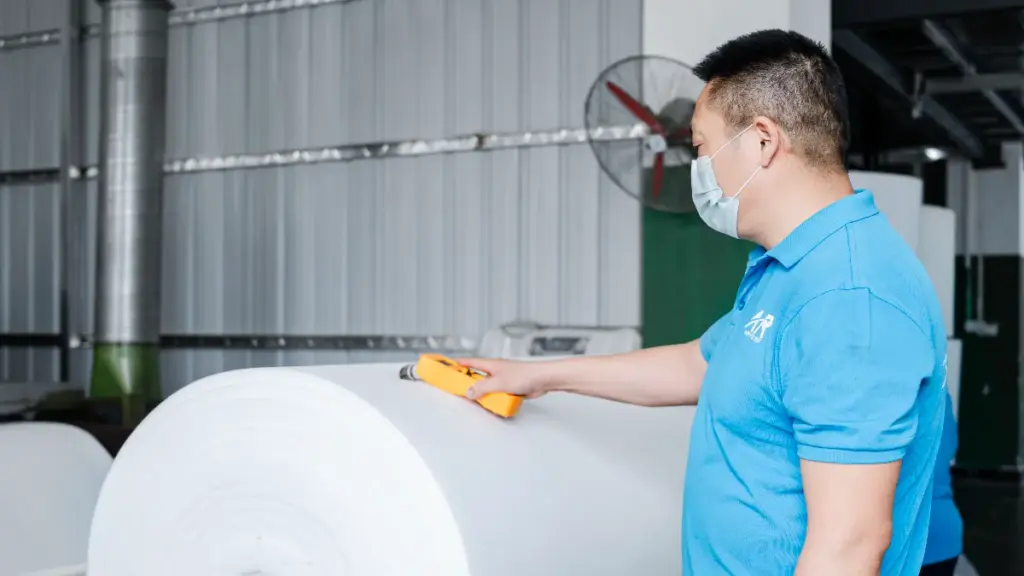
Fiberglass rolls provide excellent dust-holding capacity and can withstand high temperatures. They are mostly used in industrial settings, such as factories and paint spray booths.
Dry Type Fiberglass Air Filter Roll
Dry type fiberglass rolls are composed of fine glass fibers that trap particles efficiently while maintaining airflow. They are heat-resistant, durable, and suitable for industrial ventilation systems.
| ข้อดี | ข้อเสีย |
| High dust-holding capacity | Can be fragile during handling |
| Heat resistant | Limited chemical resistance |
| Stable under continuous airflow | Not ideal for odor removal |
Paint Stop Fiberglass Filter Roll (Green/White)
Paint stop fiberglass rolls are designed specifically for paint spray booths. They prevent paint overspray from contaminating other areas and protect workers from inhaling fine paint particles. Green rolls are coarser for primary filtration, while white rolls are finer for secondary filtration.
| ข้อดี | ข้อเสีย |
| Specialized for paint overspray | Less effective for general dust |
| High airflow capacity | Limited chemical adsorption |
| Improves workplace safety | Single-use or short lifespan |
Activated Carbon Composite Air Filter Roll Material
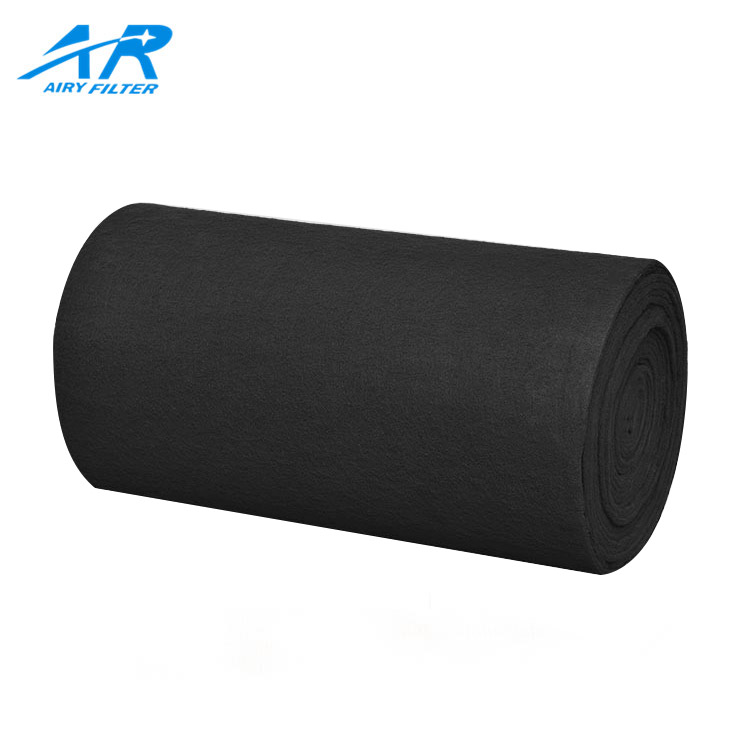
Activated carbon rolls focus on gas and odor removal. They are often combined with other filter materials for dust and chemical pollutant control.
Activated Carbon Non-woven Roll
These rolls contain porous carbon capable of adsorbing odors and chemical fumes. Filtration efficiency for dust is moderate, but they excel in removing volatile compounds. They are flexible and customizable for various HVAC applications.
| ข้อดี | ข้อเสีย |
| Excellent odor and gas adsorption | Moderate dust filtration |
| Flexible and easy to cut | Requires combination with other materials for full filtration |
| Suitable for offices and labs | Moderate lifespan |
Activated Carbon Foam Roll
Foam-based activated carbon rolls offer high airflow and effective adsorption of VOCs and odors. Common in kitchens and chemical factories, they balance filtration and airflow while providing odor control.
| ข้อดี | ข้อเสีย |
| High airflow with minimal pressure drop | Moderate dust trapping ability |
| Effective odor removal | Can degrade under extreme heat |
| Lightweight and adaptable | Requires replacement more often |
High-Efficiency Filter Roll Material
High-efficiency rolls are used where fine particles and strict air quality are critical. They include melt-blown PP, micro-glass fiber, and nano-fiber PTFE membranes.
Melt-Blown PP Filter Roll
Melt-blown PP filter rolls use ultrafine fibers, typically 1–5 microns in diameter, arranged in a dense, electrostatically charged web. This microstructure generates strong van der Waals and electrostatic attraction forces, allowing the fibers to capture particles as small as 0.3 ไมครอน, including dust, เรณู, และแบคทีเรีย. The fine yet porous network ensures low airflow resistance, making it ideal for air purifiers, respirators, and high-grade HVAC filters.
| ข้อดี | ข้อเสีย |
| High particle capture efficiency | Medium-high airflow resistance |
| Suitable for cleanrooms and healthcare | Moderate durability |
| Standard material for HEPA pre-filters | Higher cost than synthetic fibers |
Micro-glass Fiber Filter Roll
Micro-glass fiber filter rolls consist of irregularly shaped glass fibers with diameters around 0.5–3 microns, creating a maze-like structure that traps submicron particles through both inertial impaction and diffusion capture. The high porosity (typically above 90%) ensures excellent airflow while maintaining filtration efficiency up to 99.97% for 0.3 µm particles, commonly used in HEPA filters and cleanroom ventilation systems.
| ข้อดี | ข้อเสีย |
| Extremely high filtration efficiency | Fragile and requires careful handling |
| High dust-holding capacity | Can be more expensive than synthetic fibers |
| Heat resistant | Limited odor removal |
Nano-Fiber Filter Roll (PTFE Membrane)
PTFE nano-fiber filter rolls feature fibers less than 0.2 microns thick, forming a tight, smooth membrane surface. The nanoscopic pore size (0.1–0.3 µm) blocks ultrafine particles while maintaining stable airflow. PTFE’s fluoropolymer composition provides superior hydrophobicity and chemical resistance, preventing clogging from oil or moisture. This makes it an excellent choice for high-end cleanrooms, medical filtration, and precision manufacturing environments.
| ข้อดี | ข้อเสีย |
| Extremely high filtration efficiency | High cost |
| Maintains airflow | Requires precise installation |
| Suitable for critical environments | Specialized applications only |
Special Purpose Air Filter Roll Materials
Special purpose rolls serve niche needs such as antibacterial properties, flame retardancy, or combined particle and chemical filtration.
Antibacterial Filter Roll
These rolls inhibit microbial growth, reducing bacteria and mold on the filter surface. Common in hospitals, clinics, and residential air purifiers, they enhance indoor air quality.
| ข้อดี | ข้อเสีย |
| Inhibits bacteria and mold | Moderate particle filtration |
| Reduces maintenance | Slightly higher cost |
| Suitable for humid environments | Limited chemical adsorption |
Flame Retardant Filter Roll
Flame retardant rolls resist ignition and high temperatures, essential for industrial environments with flammable dust or high electrical density.
| ข้อดี | ข้อเสีย |
| Fire-resistant | Moderate filtration efficiency |
| Durable in high-heat environments | Less effective for odor removal |
| Enhances safety in industrial settings | Limited general-use applications |
Composite Filter Roll (Activated Carbon + แผ่นกรองเฮปา)
Composite rolls combine particle and odor removal, providing comprehensive air purification. Common in offices, ห้องปฏิบัติการ, and residential HVAC systems.
| ข้อดี | ข้อเสีย |
| Dual-function filtration | Higher airflow resistance |
| Reduces need for multiple filters | Moderate lifespan |
| Cost-effective for comprehensive filtration | More expensive than single-type rolls |
How to Choose the Right Air Filter Rolls
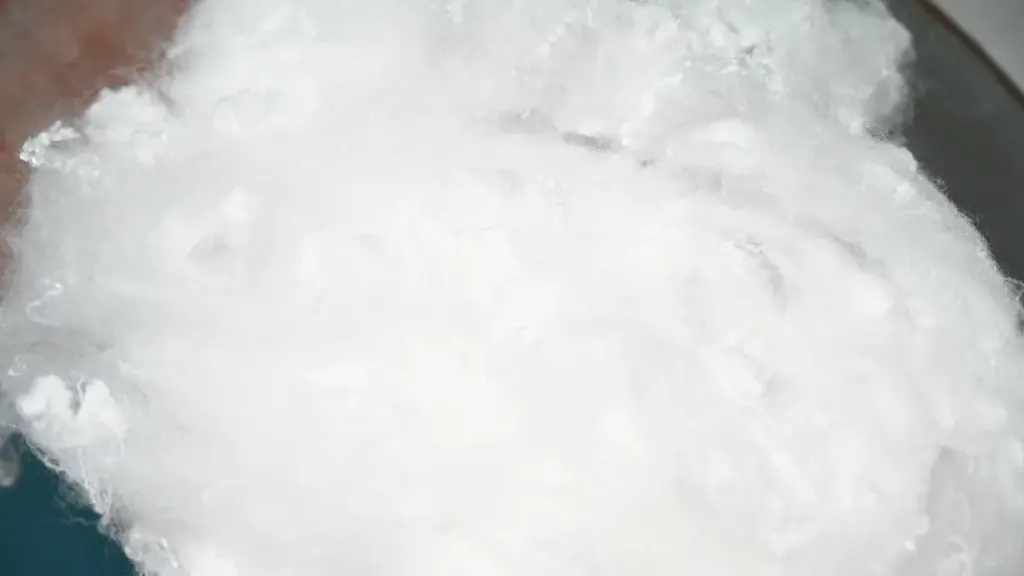
- Filtration efficiency and grade – Decide what particle size you must remove. For general ventilation, low-to-medium grades (เช่น, G3–G4) are fine. For indoor air quality or sensitive work, pick M5–F9 or HEPA-grade air filter media. Match the grade to the risk — people, อุปกรณ์, or product quality.
- Material and fiber structure – Look at fiber type, fiber diameter, and pore structure. Thin fibers and smaller pores improve capture of fine dust. Electrostatic-treated melt-blown PP or nano-fiber layers add capture without raising pressure drop. Choose the structure that fits your particle type (ฝุ่น, เรณู, oil mist, สารอินทรีย์ระเหย (VOC)).
- ความต้านทานการไหลของอากาศ (pressure drop) – Lower pressure drop saves fan energy. Check the initial pressure drop at your rated airflow (listed in Pa). If resistance is too high, your system needs stronger fans or will run less efficiently. Balance efficiency and allowable pressure drop for long-term operating cost.
- Operating environment (temperature & chemicals) – Match the roll to heat and chemical exposure. PET and PP work well for normal HVAC conditions. Glass fiber and PTFE accept higher temperatures and harsher chemicals. If the filter will see oil, acid fumes, or hot air, choose a media rated for those stresses.
- Dust-holding capacity and maintenance cycle – Ask how much dust the roll can hold before replacement. A high dust-holding capacity extends service life and lowers maintenance frequency. Also confirm recommended replacement criteria (pressure limit, visual inspection, or time) so you can plan logistics and cost.
Where to Buy Reliable Air Filter Rolls
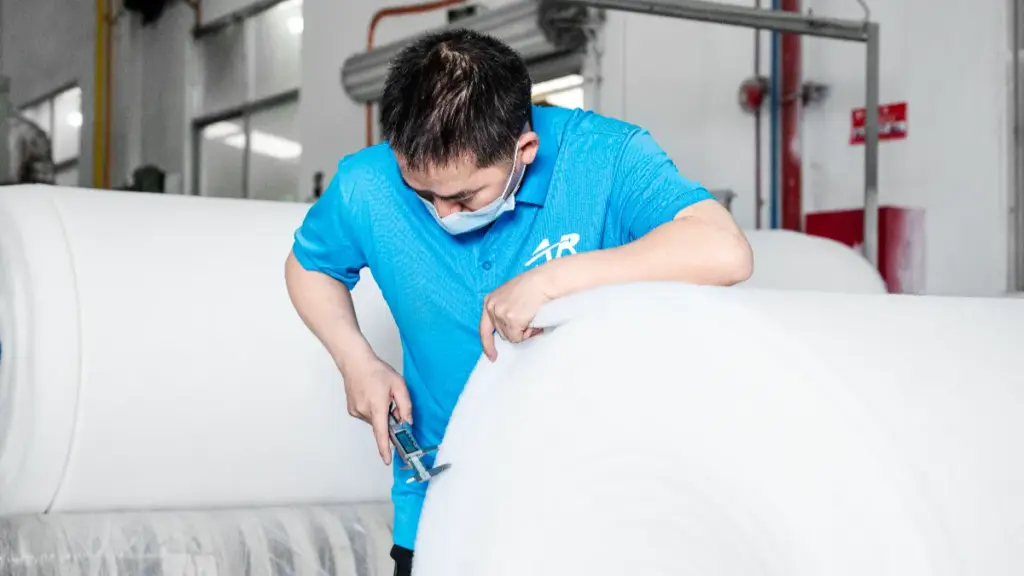
Here are four practical procurement channels, with short notes on when to use each and what to check.
Direct from manufacturers (recommended for custom and bulk orders)
Buy straight from a maker when you need custom sizes, test data, or steady long-term supply. Manufacturers can give full technical data sheets, batch test reports, and OEM options. If you order large volumes, you usually get better pricing and tighter quality control. ตัวอย่างเช่น, โปร่ง can provide samples, material specs, and custom cutting to fit your equipment — contact Airy through our website or request a technical quote to start testing.
What to check: ask for certificates, lab test reports, minimum order, lead time, and sample policy.
Authorized distributors and regional stockists
Contact distributors when you need fast delivery or small lots. They hold local stock and may offer shorter lead times and local warranty support. Distributors are good for maintenance teams that need replacement rolls on short notice. The downside: less customization and sometimes higher unit price.
What to check: confirm distributor authorization, stock status, and return policy.
Industrial wholesalers and MRO suppliers
Wholesalers and MRO (maintenance, repair, operations) vendors work well for standard sizes and routine restocking. They often give credit terms and integrate into procurement systems (POs, blanket orders). Choose them when you want quick, repeatable buys without technical customization.
What to check: verify the exact material code, request a sample, and confirm shelf-life and storage recommendations.
B2B marketplaces & trade shows (good for vetting and comparison)
Online B2B platforms (Alibaba, Global Sources, etc.) let you compare many suppliers and prices quickly. Trade shows let you meet factory reps, inspect samples, and discuss custom solutions face-to-face. Both are useful for initial supplier discovery, but always follow up with testing and document checks.
What to check: source verification, trade-assurance options, real test reports, and onsite or third-party lab testing after you receive samples.
ความคิดสุดท้าย
Air filter roll materials include a wide range of options — synthetic fibers such as PET, PP, and nylon, fiberglass types for industrial use, activated carbon composites for odor control, and advanced materials like melt-blown PP, micro-glass fiber, and PTFE nano-fiber for high-efficiency filtration. Each type is designed for specific performance needs and environments.
If you’re looking to purchase high-quality air filter rolls, welcome to contact Airy for reliable supply and expert support.

